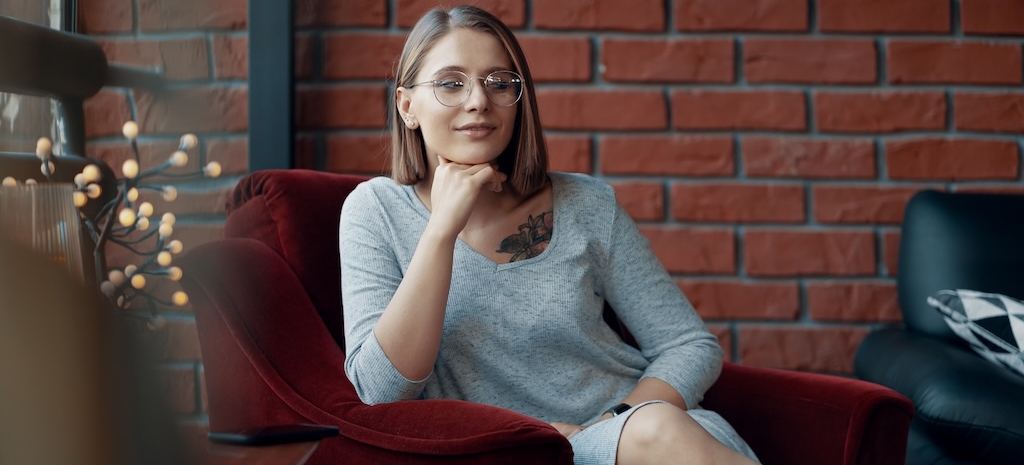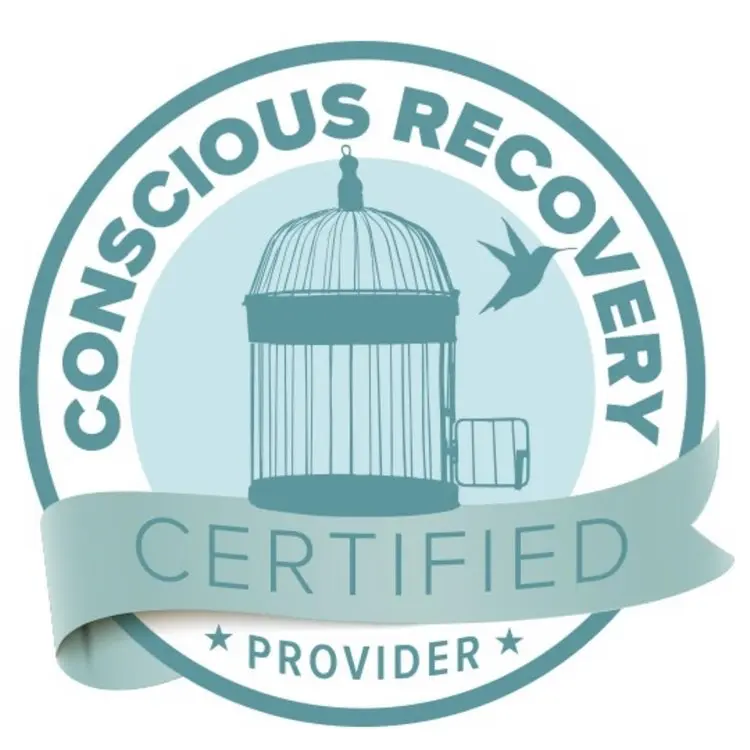Developing secure, healthy relationships starts with understanding our attachment patterns. For those with anxious attachment styles, relationships can feel like an emotional rollercoaster, filled with intense connections, fear of abandonment, and constant worry about a partner’s feelings. The good news is that with awareness and the right approach, it’s possible to heal these patterns and develop more secure, fulfilling connections.
What’s Your Attachment Style?
Understanding your attachment style is the first step toward building healthier, more secure relationships. Our comprehensive attachment style assessment can serve as a starting point to help you identify patterns, understand triggers, and recognize how your early experiences may be affecting your current relationships.
Understanding Anxious Attachment

Anxious attachment is one of several attachment styles that develop early in life based on our relationships with primary caregivers. When these early relationships are inconsistent—sometimes attentive and loving, other times distant or unavailable—we can develop an anxious attachment style that follows us into adulthood.
People with anxious attachment often experience:
- Intense fear of abandonment
- Hypervigilance in relationships
- Constant need for reassurance
- Emotional dependency
- Low self-esteem
- Difficulty trusting others
- Tendency to overthink and ruminate about relationships
This attachment style can significantly impact your ability to form healthy, secure relationships, but the good news is that attachment styles can change over time with the right approach.
The Origins of Anxious Attachment
Understanding the origins of anxious attachment is the first step toward healing. These patterns don’t develop randomly but are responses to our earliest relationship experiences.
Early Childhood Experiences
Anxious attachment typically develops when a child experiences inconsistent caregiving. These experiences might include:
- Parents who are sometimes emotionally available and sometimes not
- Unpredictable responses to the child’s needs
- Caregivers who use threats of abandonment as discipline
- Family environments with significant stress, substance abuse, or mental health challenges
- Separation from primary caregivers during formative years
These experiences teach the developing brain that love and support are available but not reliable, creating a pattern of anxiety and hypervigilance around relationships.
The Neuroscience of Attachment
Research has shown that early attachment experiences actually shape brain development. Secure attachment promotes healthy development of the prefrontal cortex, which regulates emotions and impulses. In contrast, inconsistent caregiving can lead to heightened amygdala activity (the brain’s fear center) and altered stress response systems.
This neurological wiring explains why anxious attachment isn’t simply a choice or personality trait—it’s deeply embedded in our nervous system responses. However, due to neuroplasticity (the brain’s ability to reorganize itself), these patterns can be reprogrammed with consistent effort and appropriate therapeutic approaches.
Signs You May Have an Anxious Attachment Style
If you’re wondering whether you have an anxious attachment style, consider whether you experience the following in your relationships. You can also take our attachment style quiz for a more detailed assessment:
- Constant worry about your partner’s feelings for you
- Need for frequent reassurance and validation
- Tendency to become overly dependent in relationships
- Fear that small disagreements might end the relationship
- Difficulty being alone or between relationships
- Tendency to idealize partners early in relationships
- Difficulty setting or maintaining boundaries
- People-pleasing behaviors to avoid rejection
- Emotional reactivity to perceived rejection or abandonment
- “Mind-reading” or assuming what others are thinking (usually negative)
Many people with anxious attachment style aren’t fully aware of these patterns, as they’ve become normalized over time. At Monima Wellness, our comprehensive neuropsychological testing can help identify attachment patterns that might be affecting your relationships and well-being.
How Anxious Attachment Affects Your Relationships
Anxious attachment doesn’t exist in isolation—it manifests most clearly in how we relate to others. Understanding these relationship patterns can help you identify when your attachment system is activated.
Romantic Relationships
In romantic relationships, anxious attachment can create cycles of distress:
- Hypervigilance phase: Constantly monitoring for signs of your partner’s diminishing interest or impending abandonment
- Activation phase: When a trigger occurs (even a minor one, like a delayed text response), the attachment system activates, causing anxiety and fear
- Protest behaviors: Actions taken to reestablish connection, which might include excessive calling/texting, emotional outbursts, accusations, or attempts to make the partner jealous
- Temporary relief: When the partner responds reassuringly, temporary calm is restored
- Return to hypervigilance: The cycle begins again
This pattern can be exhausting for both partners and may eventually push away even the most understanding and loving partners.
Friendships and Work Relationships
Anxious attachment doesn’t just affect romantic relationships; it also impacts other areas of life. In friendships, it might manifest as:
- Difficulty trusting friends’ commitment to the friendship
- Taking canceled plans personally
- Overcommitting to help friends at the expense of your own needs
- Difficulty expressing disagreement for fear of rejection
In professional settings, anxious attachment might appear as:
- Difficulty receiving constructive feedback
- Overworking to prove your value
- Fear of speaking up in meetings
- Reluctance to set appropriate work-life boundaries
- People-pleasing with supervisors and colleagues
Evidence-Based Therapy Approaches for Anxious Attachment

Healing an anxious attachment style is possible through consistent effort and appropriate support. Multiple therapeutic modalities have proven effective for addressing anxious attachment patterns, each offering unique tools and perspectives for transformation.
1. Cognitive Behavioral Therapy (CBT)
CBT helps identify and challenge the negative thought patterns that fuel anxious attachment. By recognizing distorted thoughts (like catastrophizing or mind-reading) and replacing them with more balanced perspectives, you can reduce the emotional reactivity that drives anxious behaviors.
At Monima Wellness, our expert therapists incorporate Cognitive Behavioral Therapy techniques to help clients recognize and reframe the negative thought patterns that fuel anxious attachment responses.
2. Attachment-Based Therapy
This specialized therapeutic approach focuses directly on understanding and transforming attachment patterns. By exploring early experiences and their impact on current relationships, you can develop a coherent narrative about your attachment history and begin to form new, more secure attachment patterns.
Monima’s attachment-based therapy program provides a supportive environment to explore these patterns with therapists specially trained in attachment theory and its applications.
3. EMDR (Eye Movement Desensitization and Reprocessing)
For those whose anxious attachment is connected to specific traumatic experiences, EMDR can help process and integrate these memories. This approach can reduce the emotional charge of past experiences that trigger anxious attachment responses.
Monima Wellness offers EMDR therapy as part of our comprehensive trauma treatment program, allowing clients to address the root causes of attachment insecurity.
4. Dialectical Behavior Therapy (DBT)
DBT provides specific skills for emotional regulation, distress tolerance, interpersonal effectiveness, and mindfulness—all crucial for managing the intense emotions that come with anxious attachment. These skills enable you to respond to relationship triggers with greater awareness and intention, rather than reactivity.
Our DBT-trained clinicians at Monima offer Dialectical Behavior Therapy to help women develop practical skills to navigate relationship challenges with greater confidence and emotional stability.
5. Internal Family Systems (IFS)
IFS Therapy views the mind as naturally consisting of sub-personalities or “parts,” and works to heal these parts that may carry trauma. This approach can be particularly helpful for anxious attachment, as it:
- Helps individuals relate to their anxious attachment patterns with compassion rather than shame
- Addresses the different “parts” that developed to cope with early relationship experiences
- Builds internal resources and self-leadership
- Allows people to understand that their anxious behaviors came from parts trying to protect them
Self-Guided Attachment Healing Practices

While professional support is invaluable for healing attachment patterns, there are also practices you can incorporate into daily life:
1. Mindfulness and Meditation
Regular mindfulness practice helps you observe anxious thoughts and feelings without reacting to them immediately. This creates a crucial space between trigger and response, allowing you to choose healthier reactions.
Try this simple mindfulness exercise when feeling anxiously attached:
- Notice the anxious feeling and name it: “I’m feeling anxious about my relationship right now.”
- Take three deep breaths
- Ask yourself: “What evidence do I have for my concern?”
- Remind yourself: “This is my attachment system activating.”
2. Journaling
Writing about your attachment triggers, reactions, and the underlying feelings can help you identify patterns and process emotions more effectively. Consider keeping a relationship journal where you track:
- Situations that trigger anxious feelings
- Your thoughts, feelings, and behaviors in response
- Alternative perspectives you might consider
- What you learned from the experience
3. Building Self-Reliance
Developing greater comfort with independence helps reduce the desperate need for others that can drive anxious attachment behaviors:
- Practice spending time alone doing enjoyable activities
- Develop personal interests independent of your relationships
- Build a diverse support network rather than relying on one person
- Practice self-soothing techniques for moments of distress
4. Body-Based Approaches
Since attachment patterns are stored in the body and nervous system, somatic (body-based) approaches can be particularly helpful:
- Regular exercise to reduce anxiety
- Yoga and breathwork to regulate the nervous system
- Progressive muscle relaxation for physical tension
- Dance or movement therapy to express emotions non-verbally
Monima Wellness incorporates several body-based healing modalities, including trauma-informed yoga, breathwork, and acupuncture, which can be particularly effective for addressing the physical manifestations of anxious attachment.
Creating Secure Relationships: Practical Strategies
As you work on healing your attachment style, these practical strategies can help you build more secure relationships:
Effective Communication
Learning to express your needs clearly and directly can reduce the anxiety that comes from hoping others will intuitively understand you:
- Use “I” statements to express feelings: “I feel worried when I don’t hear from you for a while,” rather than “You never text me back.”
- Ask directly for what you need: “I’d appreciate a quick text if you’re going to be late.”
- Practice assertive (not aggressive or passive) communication
- Develop comfort with appropriate vulnerability
Setting Healthy Boundaries
Many people with anxious attachment struggle with boundaries, either having too few or creating rigid ones to protect themselves:
- Identify your non-negotiable needs in relationships
- Practice saying “no” to requests that don’t align with your values or needs
- Recognize when you’re taking responsibility for others’ emotions
- Allow yourself and others appropriate space and independence
Choosing Compatible Partners
While anyone can work toward having a secure relationship, certain partner choices can make the journey easier or harder:
- Partners with secure attachment can provide consistency that helps heal anxious attachment
- Avoidant partners may unintentionally trigger anxious attachment responses
- Partners who are willing to understand attachment theory and work on the relationship together offer the best opportunity for growth.
Building a Secure Support Network
Expanding your circle of support reduces the pressure on any single relationship:
- Cultivate multiple close friendships
- Maintain family connections where healthy
- Consider group therapy or support groups
- Engage with the community through volunteering or shared interests
When To Seek Professional Help for Attachment Challenges

While self-help strategies are valuable, professional support often makes the difference in successfully transforming anxious attachment patterns.
Consider working with a mental health professional if:
- Your anxious attachment significantly impairs your relationships or daily functioning
- You’ve experienced trauma that contributes to attachment insecurity
- Self-help strategies haven’t resulted in meaningful change
- You’re in a pattern of repeatedly choosing partners who reinforce your anxious attachment
- Your anxiety is accompanied by depression, substance use, or other mental health concerns
Types of Support Available for Attachment Disorders
Various levels of support can help address anxious attachment, each offering distinct benefits tailored to your specific needs and circumstances.
Individual Therapy
Individual therapy offers personalized guidance and a safe space for exploring attachment patterns. This approach is essential when you need to understand your specific triggers, process past experiences, and develop customized coping strategies for managing anxious attachment responses. Working one-on-one with a therapist allows you to dive deep into your attachment history and develop insights tailored to your unique situation.
Group Therapy
Group therapy offers opportunities to practice new relationship skills and receive valuable feedback from others who understand similar struggles. This approach is particularly beneficial when anxious attachment has made it difficult to trust others or communicate effectively. Group settings allow you to build interpersonal skills in a supportive environment while learning from others’ experiences and perspectives.
Couples Therapy
Couples therapy can help both partners understand attachment dynamics and create a more secure bond together. This approach is beneficial when anxious attachment patterns are creating recurring conflicts, communication breakdowns, or cycles of pursuit and withdrawal in your relationship. Working with a therapist as a couple can help both partners develop healthier ways of connecting and responding to each other’s needs.
Intensive Outpatient Programs
Intensive outpatient programs provide structured support while allowing you to maintain your daily life. This level of care is ideal when anxious attachment patterns are significantly impacting your relationships, work performance, or emotional stability, but you can still function in your daily routine. IOPs offer regular therapeutic support without requiring you to step away from your responsibilities completely.
Partial Hospitalization Programs
Partial hospitalization programs provide comprehensive care for individuals with more severe symptoms. This intensive level of support is beneficial when anxious attachment has led to persistent anxiety, depression, or relationship crises that require daily therapeutic intervention to stabilize. PHPs provide the most intensive outpatient care available while still allowing you to return home each evening.
At Monima Wellness, we offer multiple levels of care specifically designed for women and female-identifying individuals seeking to heal relationship patterns and build healthier connections. Our gender-specific approach acknowledges the distinct challenges this population faces in relationships and offers targeted support for attachment healing.
The Unique Journey of Women and Female-Identifying Individuals with Anxious Attachment
Women and female-identifying individuals often face particular challenges related to anxious attachment due to societal expectations and cultural messaging:
- Cultural narratives that romanticize anxious attachment behaviors as signs of love
- Social expectations for women to be the emotional caretakers in relationships
- Gender roles that can discourage direct communication of needs
- Higher rates of specific traumas that can contribute to attachment insecurity
At Monima Wellness, our women-centered approach recognizes these unique factors. Our therapeutic environment, designed for women and female-identifying individuals, provides a safe space to explore attachment patterns without gender-based judgment or expectations.
Transform Your Relationships, Embrace True Healing

If you’re ready to begin your journey toward more secure, fulfilling relationships, contact Monima Wellness today. Our admissions team can help guide you to the right level of care tailored to your unique needs.
Healing is possible—and you don’t have to do it alone.
References
- Sagone, E., Commodari, E., Indiana, M. L., & La Rosa, V. L. (2023). Exploring the Association between Attachment Style, Psychological Well-Being, and Relationship Status in Young Adults and Adults-A Cross-Sectional Study. European journal of investigation in health, psychology and education, 13(3), 525–539. https://doi.org/10.3390/ejihpe13030040
- Simpson, J. A., & Steven Rholes, W. (2017). Adult Attachment, Stress, and Romantic Relationships. Current opinion in psychology, 13, 19–24. https://doi.org/10.1016/j.copsyc.2016.04.006
- Porter, L. S., Davis, D., & Keefe, F. J. (2007). Attachment and pain: recent findings and future directions. Pain, 128(3), 195–198. https://doi.org/10.1016/j.pain.2007.02.001



